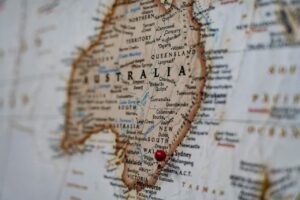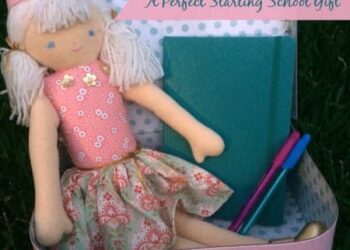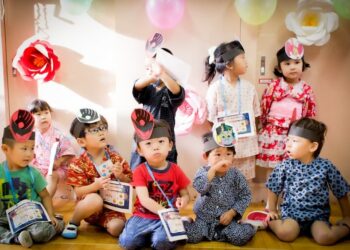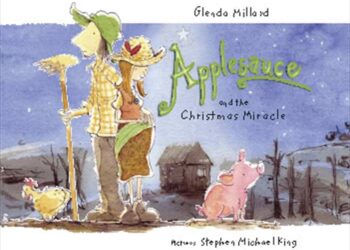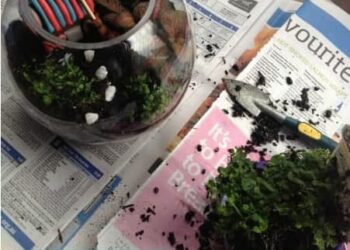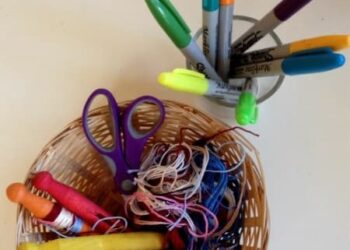I’m quite fond of this book. I think that fondness comes from my roots as a history teacher, but also because of my passion and fascination with Australian history. It is honestly a book I’d eagerly use in the classroom, but it most certainly has its place in the home too. It has a rightful place on this very special list of Australian history books for young readers too.
To compile a concise history of Australia is not a task for the fainthearted. Tania has been meticulous in her research, and thoughtful in her selection of facts to create an overview of Australia’s rich and diverse history for children. It is a valuable non-fiction resource that hopefully encourages in-depth and exploratory discussions and learnings, making it an ideal starting point for delving into Australian history.
Australian Story: An Illustrated Timeline is a very image-focused publication. A vast array of the special images that appear in the book have been selected from the National Library of Australia’s beautiful collection. Peter Shaw, designer, and illustrator, deserves credit for this book too. He has used Tania’s vision, research, and writing to create an informative graphic that flows nicely and is easy to navigate.
The visual layout and design of Australian Story: An Illustrated Timeline makes it such a versatile book: It can be as much or as little as you want it to be; You can read it in its entirety or simply steal snippets of its information; it will interest both the avid historian and the history novice; it will be enjoyed by traditional readers and visual readers; and it has been created for children and adults of all ages.
A bold timeline appears at the bottom of each page. Adjoined to the timeline are rich images, quick facts, and informal annotations. Something small and quirky that stood out for me was the use of various fonts throughout the timeline to represent each specific era of our history.
The timeline begins 180,000,000 years ago, describing the physical formation of Australia’s land mass. Spanning to 2010, Australian Story: An Illustrated Timeline covers facts and events relating to Australia’s physical and urban geography, Indigenous arrival and influence, European exploration and arrival, resources, sport, transport, government, personal and national accomplishments, food, technology, inventions, and animals.
After teaching Australian history in schools for 10 years, I did know most of the facts presented in the book. However, I didn’t have any idea that swimming at public beaches was illegal until 1902 and I didn’t know that the first Australian Rules matches were played in 1858. So, I do believe there is something for everyone to learn from Australian Story: An Illustrated Timeline.
Of course, as long as time keeps on ticking, a timeline never ends. So Tania ends the book with these questions, ‘Where will we go next? What will we do? It’s all up to you…’ I love the empowering message that Tania leaves with her readers: that the future does depend on the decisions and actions taken by us all.
Australia’s history will continue to be rich, I’m sure. Some of our most significant achievements appear on the last page of the timeline: appointing our first female Governor General, officially apologizing to the Stolen Generation, and appointment of our first female prime minister.
Australian Story: An Illustrated Timeline has me itching to get back into the classroom. Here are just some of the ways I’d love to use the book:
- Ask the children to find their birth year in the book (or the birth year of someone else they know)
- Use the facts as a stimulus for creative writing: ask the children to select a fact of interest and create a fictional story around that fact.
- Ask the children to select a fact of interest and find out more about it.
- Use the book as a springboard for some fun classroom games. ( True or False?/ Guess the year/ or ask the children to use the facts in the book to help them create their own Trivia Quiz or board game)
- Ask the children to use Australian Story: An Illustrated Timeline as a model for creating a historic timeline of their own life, school, or local community
- Ask the children to scan the book, grouping the images into primary or secondary sources
- Discuss with the children the cause and effect of specific historical events
- Use the book as a shared reading resource at the beginning of a topic.
- Ask the children to research other facts or events that do not appear in Australian Story: An Illustrated Timeline, and ask them to justify which ones they would add to it.
These are just some ideas I wrote down off the top of my head. Tania has prepared official teachers’ notes for Key Stage I (Ages 5-8) which she published on Sheryl Gwyther’s blog, and Key Stage II (Ages 8-12) which she published on The Book Chook. If you are an educator, they are certainly worth a look.



